The cooling system of your recreational vehicle (RV) can run low on freon gas for many reasons. Eventually, it will fail to regulate the temperature efficiently in the RV's interior. We will discuss the correct type of freon for your Coleman RV air conditioner to avoid that.
Depending on the model of one's RV, the type of freon for its air conditioner can vary. Nowadays, people have become more aware of the environmental hazards of refrigerants, so they choose to replace them with eco-friendly ones.
For a Coleman RV, the R410A is the ultimate choice.
Understanding the importance of freon and the right one to use for your RV can save you from disasters, especially if you plan to escape the hustle and bustle of the city anytime.
Read more about your Coleman RV air conditioner, recharging your AC, and more!
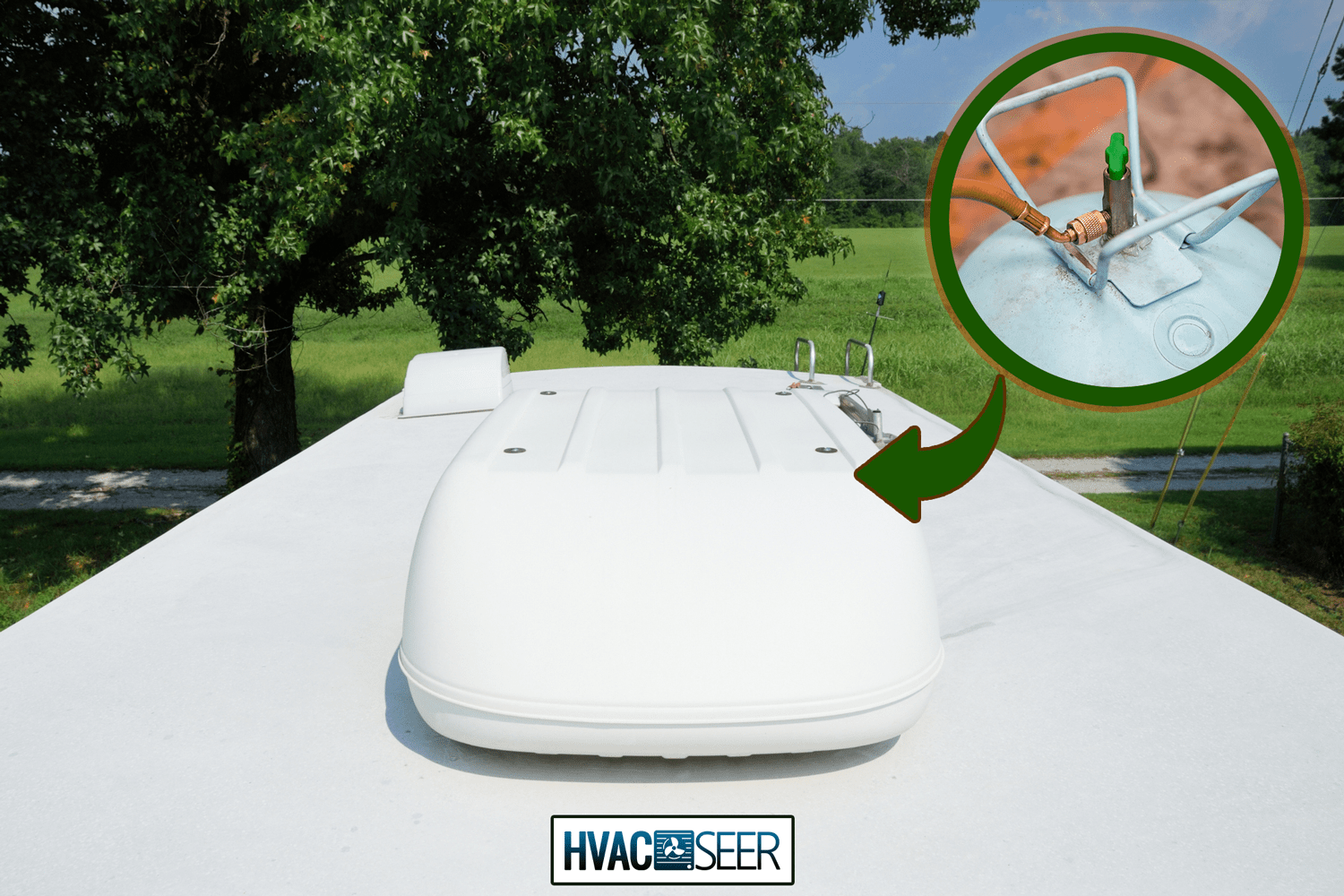
What Type Of Freon Should I Use For A Coleman RV Air Conditioner?
There are several compelling reasons to have a Coleman air conditioner in your RV.
On top of its expected job of just cooling your RV's cabin, regardless of the weather, it is stellar for being energy-efficient, quiet, and the most powerful RV air conditioner out there with 15,000 BTU!
With Coleman AC's nearly unmatched features, you may think it will not wear and tear.
You might think it operates with a different kind of cooling magic. It relies on a refrigerant common to all manufactured RV air conditioners: freon.
Freon, a popular brand name for a non-combustible gas, is a refrigerant. It undergoes several processes to produce cold air for any AC system. R410 is most probably used in your Coleman RV air conditioner among the many types of freon.
The Air Conditioning System In An RV: Explained
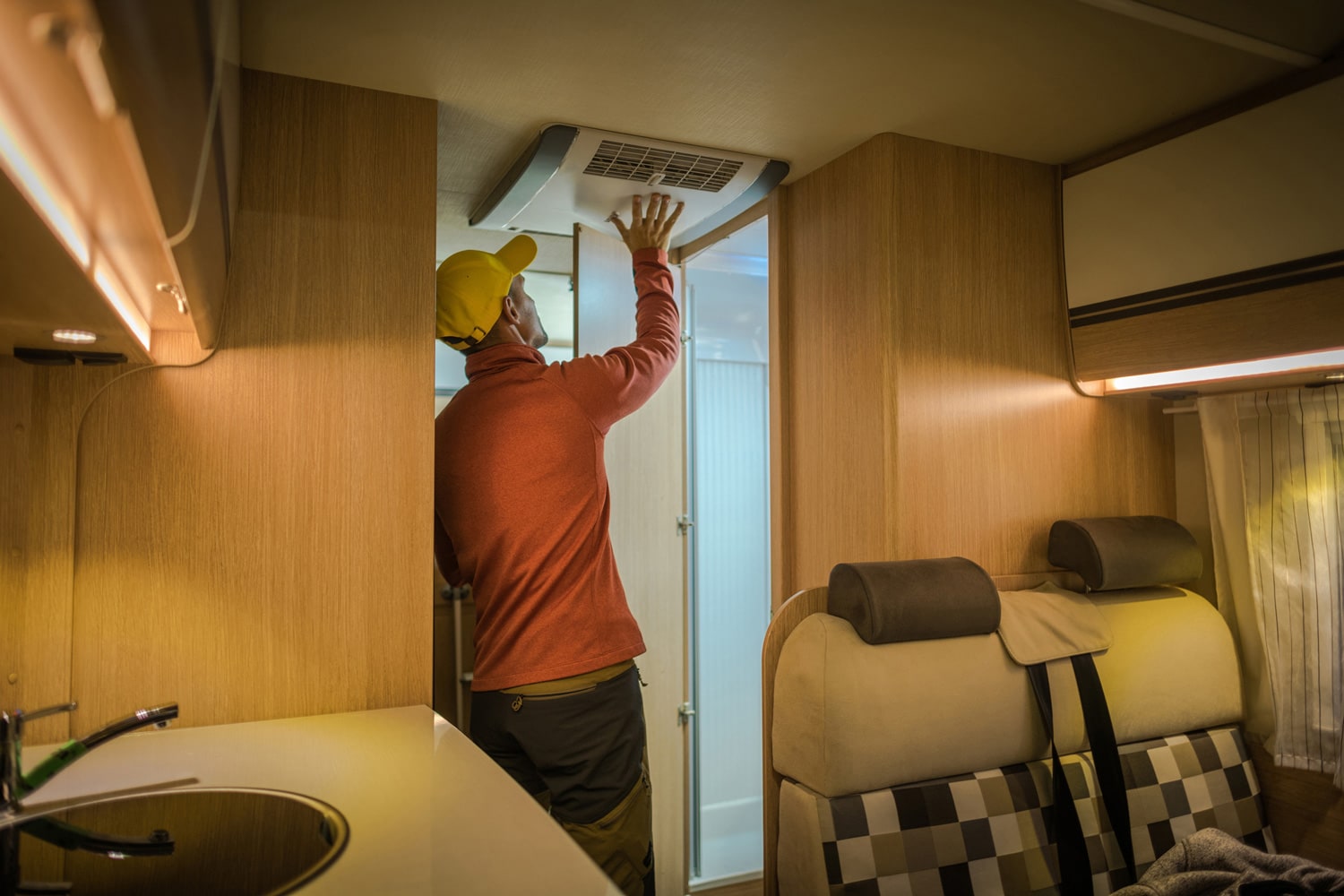
Perhaps you have read some of our posts about home air conditioning systems. This time, we will briefly explain the positioning of the AC unit, its major parts, and how an AC system works in an RV (aka motorhome, rig, or camper).
Correct AC Positioning
The air conditioner vents of an RV are typically located on the rooftop.
The correct positioning of the AC is essential for efficiently removing the hot ambient air from the camper. Since warm air tends to rise, it becomes easy for the AC on the ceiling around the middle of the vehicle to suck it out.
RV Air Conditioner Parts
An RV air conditioner works like a refrigerator, with five major components aside from the refrigerant. The intake vent, evaporator coils, compressor, condenser coils, and a fan system.
How An RV Air Conditioner Works
Cooling of the air from the RV happens initially from the compressor, next to the condenser, then to the evaporator, then back to the compressor. The cycle goes on and on.
The compressor pulls the freon, now in its gas form, and raises its temperature. The pressurized hot gas then goes to the condenser, a cooling device that removes the heat from the said hot gas.
Consequently, the gas reverts to its cool liquid form and goes to the evaporator, the most crucial part of the cooling process.
The cold refrigerant liquid in the evaporator travels through the coils to attract the heat and moisture out of the warm air that enters the intake vent. A fan blowing over the coils facilitates this air movement.
The liquid will continue to absorb heat until it reaches its saturation point. As a result, it vaporizes and exits the evaporator by traveling through the tubings to the outside unit.
After leaving the evaporator, the gas returns to the compressor to repeat the cycle.
Finally, the chilled air enters the RV through the vent for you and your companions to enjoy throughout your travel or camping.
It is important to note that unlike the AC used at home or in other automobiles, the RV AC system is closed, sealing up its refrigerant tightly in the tubing.
The freon has no exit point; thus, it circulates continuously and cycles through the system.
Can You Recharge A Coleman RV Air Conditioner?
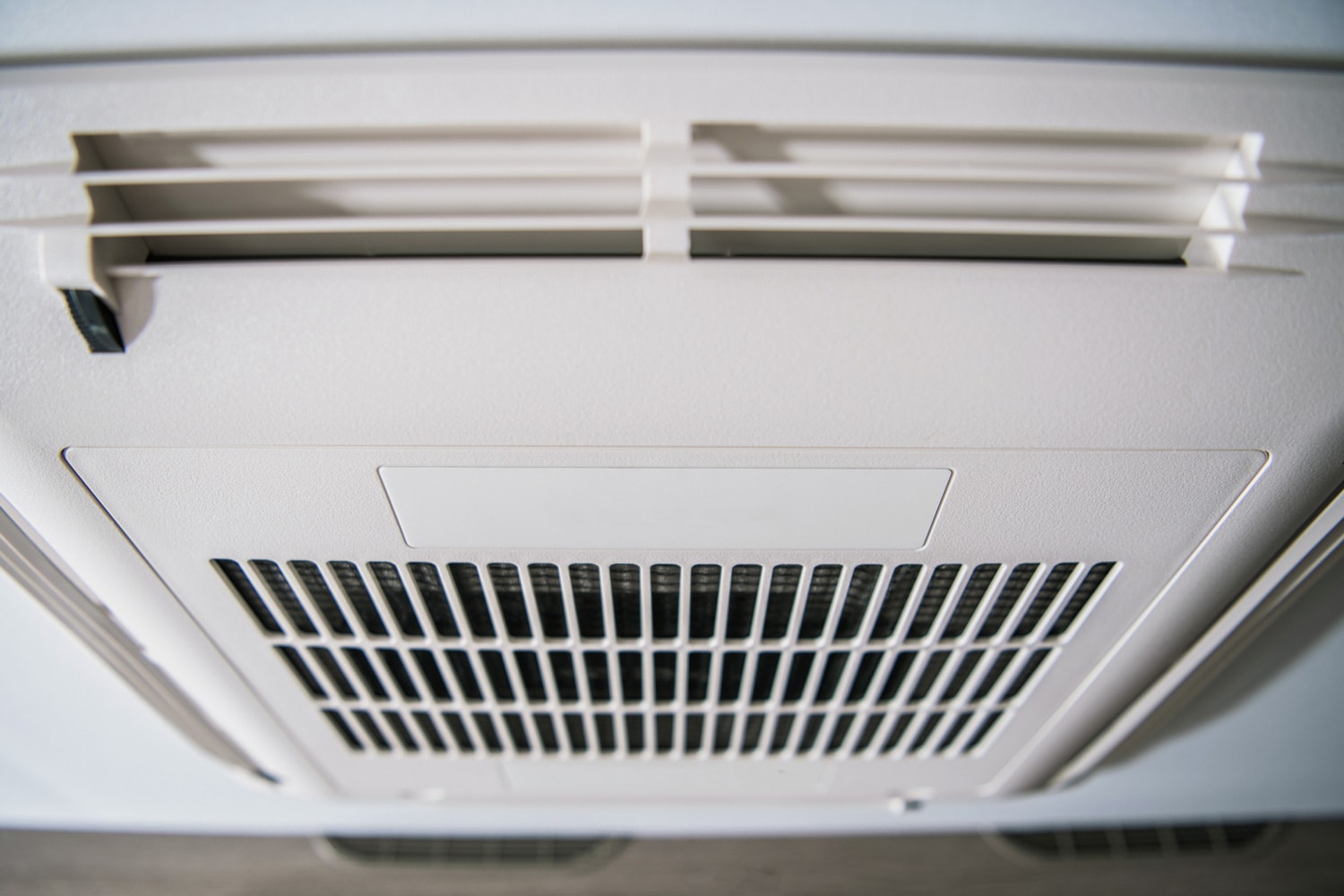
Early on, we figured out the type of freon gas for a Coleman RV air conditioner. That leads us now to ask if we can recharge it. The answer is 'Yes, it is possible, but ideally, you should not.'
For instance, the Coleman-Mach air conditioners have a design that does not require recharging. As mentioned before, they are built with a hermetically sealed system, making their freon fully functional through many years.
Additionally, RV ACs do not have the needed port or refill point through which recharging can be done. That means that if you suspect that the unit has a low refrigerant charge due to a leak, it is best to have the unit inspected by a technician.
How Do I Know If My RV Is Low On Freon?
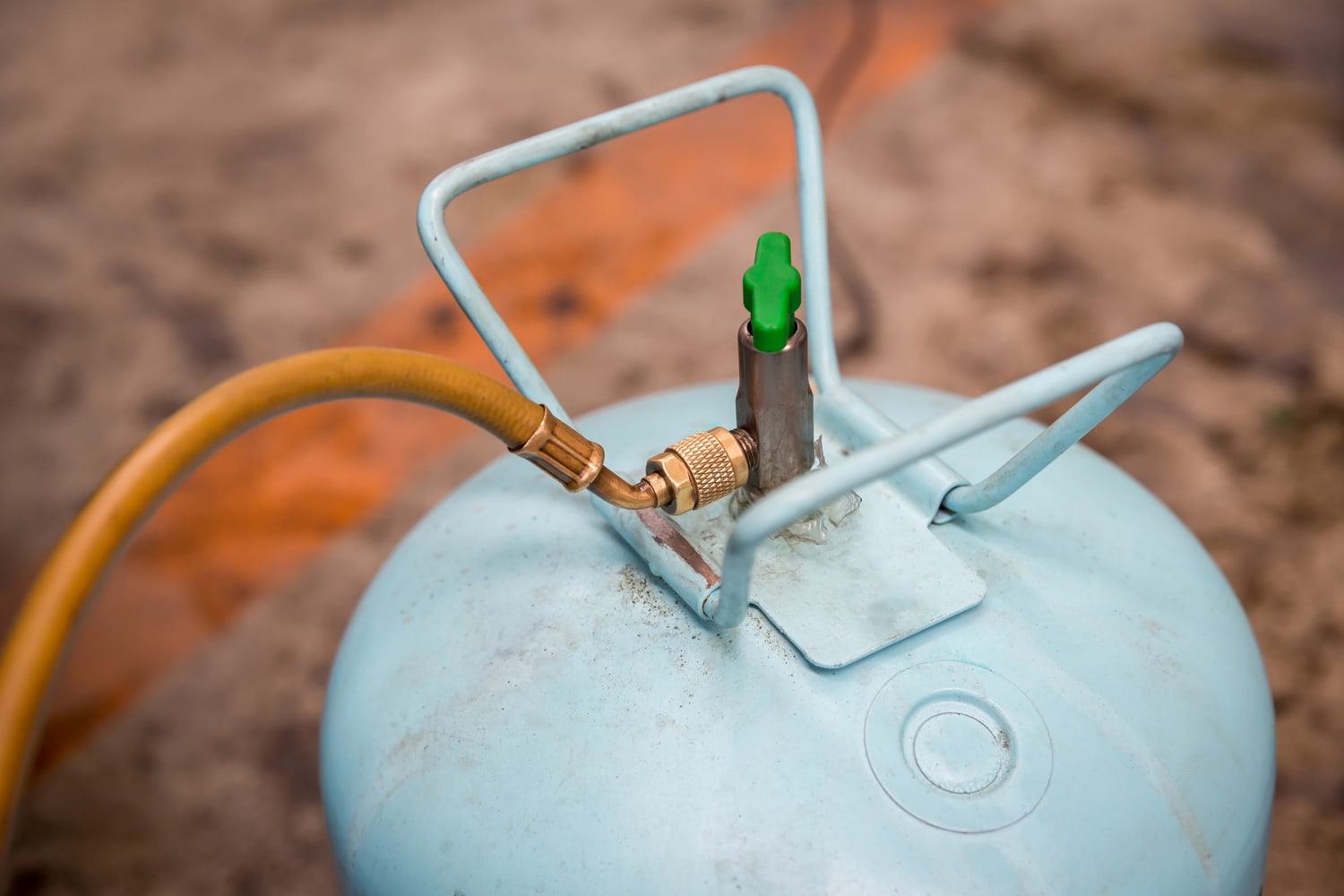
Several indications tell you that your RV AC is running low on freon. This can happen due to a tiny opening or bend in the refrigerant line or a leak because of high pressure over time.
Your RV AC may have an insufficient level of refrigerant if:
- Only warm air is coming out of the vent.
- There is ice build-up on the evaporator coils.
- The RV takes a longer time to cool down.
- The refrigerant line creates a hissing sound.
Despite these signs, do not hastily proceed with a DIY freon recharging. Doing such can be unsafe and might ruin the unit. Seeking help from a professional HVAC technician is still paramount.
What Are The Different Types Of RV AC Units?
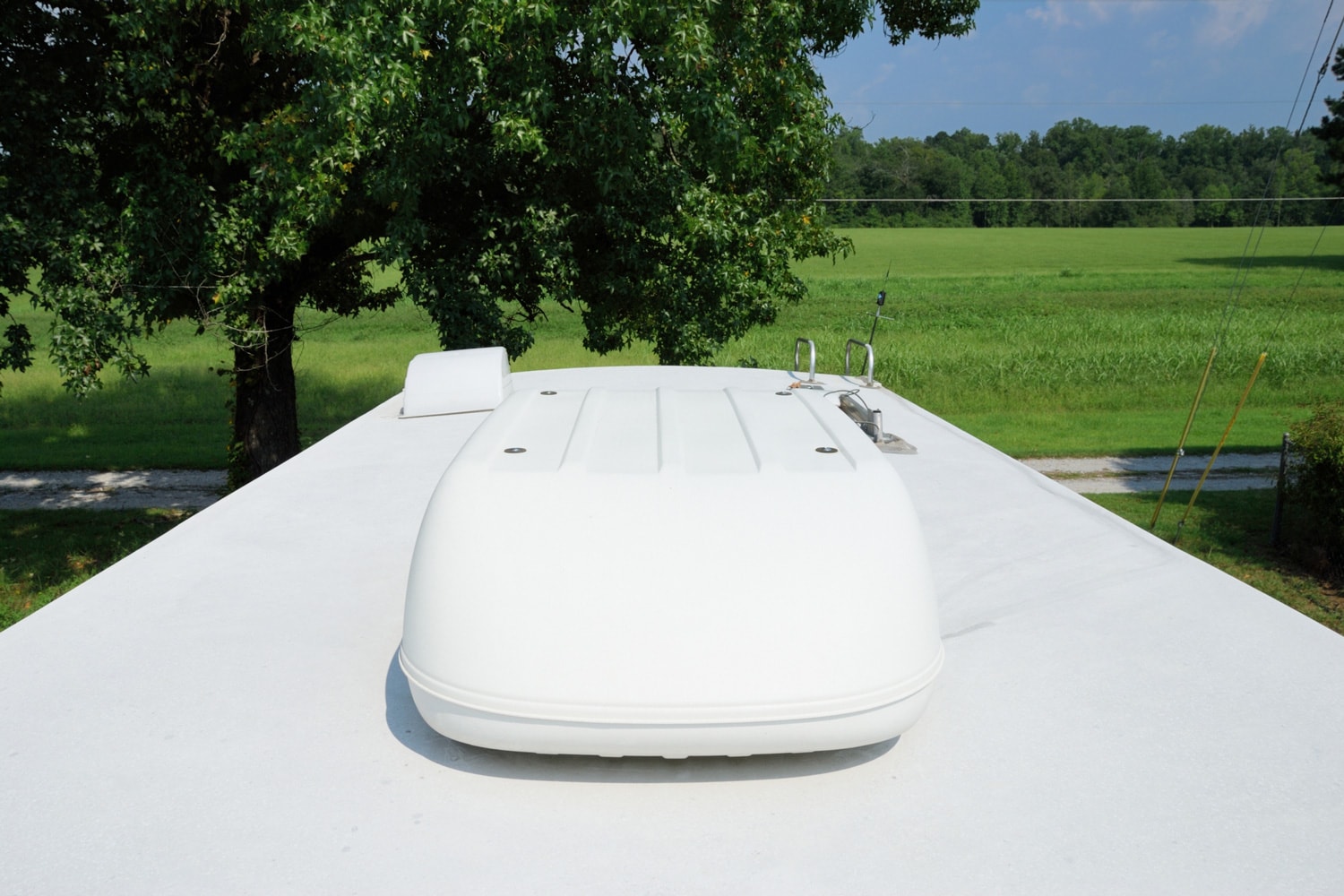
Not all RV ACs are the same. While they have common parts, these units can have slight differences in features and maintenance needs.
The types of RV ACs you should know about are ducted, ductless, window, and portable.
Ducted
This type relies on a vent system to deliver cool air into the RV's interior.
Because some motorhomes already have multiple built-in ducts, it's ideal for installing a ducted air conditioner for your RV. A ducted AC works quieter and efficiently distributes cold air throughout the rig.
Ductless
Also called non-ducted RV AC, this type is often used in small RVs or campers. Because it does not operate with a duct system, it just blows cold air out of the bottom part of the AC.
Compared to a ducted AC, this one is cheaper.
Window
Some RV owners prefer installing a window type instead of a roof-mounted AC. Installing this AC is relatively cheaper than having the AC on the ceiling.
Additionally, if you do not want to add height to your RV or if you want to save more space in your camper, a window unit is perfect.
Portable
Considering movability and affordability, portable units are a good option to regulate your RV's temperature.
You should, however, ensure that the unit has the right size and adequate BTU power to do the job efficiently. Knowing the square footage of your RV rooms can help you determine the needed amount of BTU.
Here are some room sizes in square feet and the corresponding recommended BTU:
- 200 square feet - 8,000 BTU
- 300 square feet - 10,000 BTU
- 400 square feet - 12,000 BTU
- 600 square feet - 14,000 BTU
Below is a 10,000 BTU portable unit for your RV.
Check out this product on Amazon.
How Much Does It Cost To Install An AC System Into An RV?
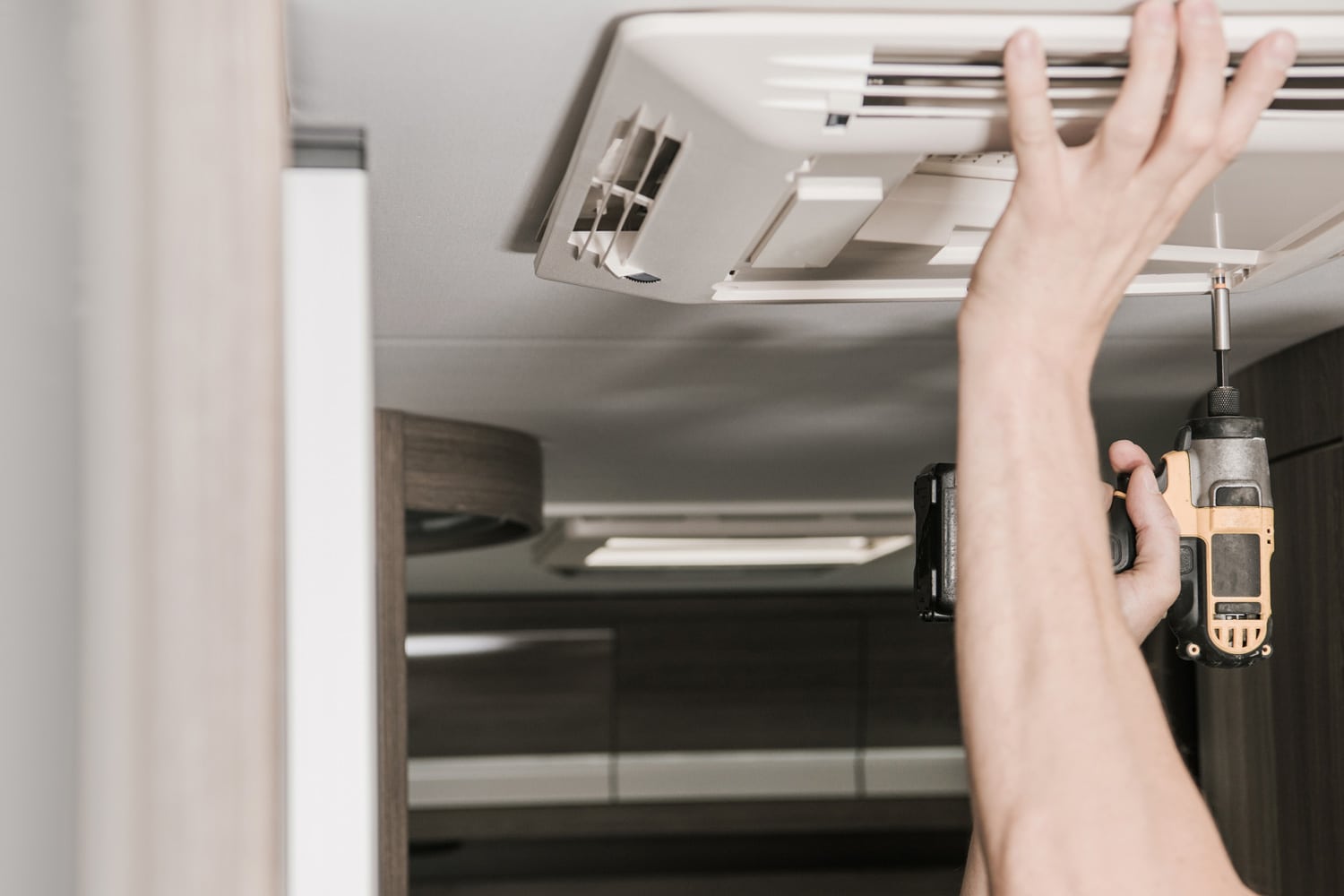
The installation alone of rooftop air conditioners for RVs starts at $200. On the other hand, depending on the brand and BTU, the unit can cost between $700 to $1,400.
Pricing is also determined by the unit type (e.g., ducted, ductless).
For example, a Coleman RV Air Conditioner with the highest cooling output of 15,000 BTU can cost around $800.
In Closing
Who doesn't love the idea of escaping from the hustle and bustle of the city while riding in a luxurious and comfy RV? The problem is that your RV can run low on freon, ruining your most-awaited long road trip and camping.
Proper knowledge about RV maintenance is essential, especially the specific freon your Coleman RV AC requires. This will, in turn, ensure that your next escapade will be smooth and worthwhile!
If you enjoyed reading this informative article, try visiting our other posts about RVs:
RV Water Heater Keeps Shutting Off—What to Do?

